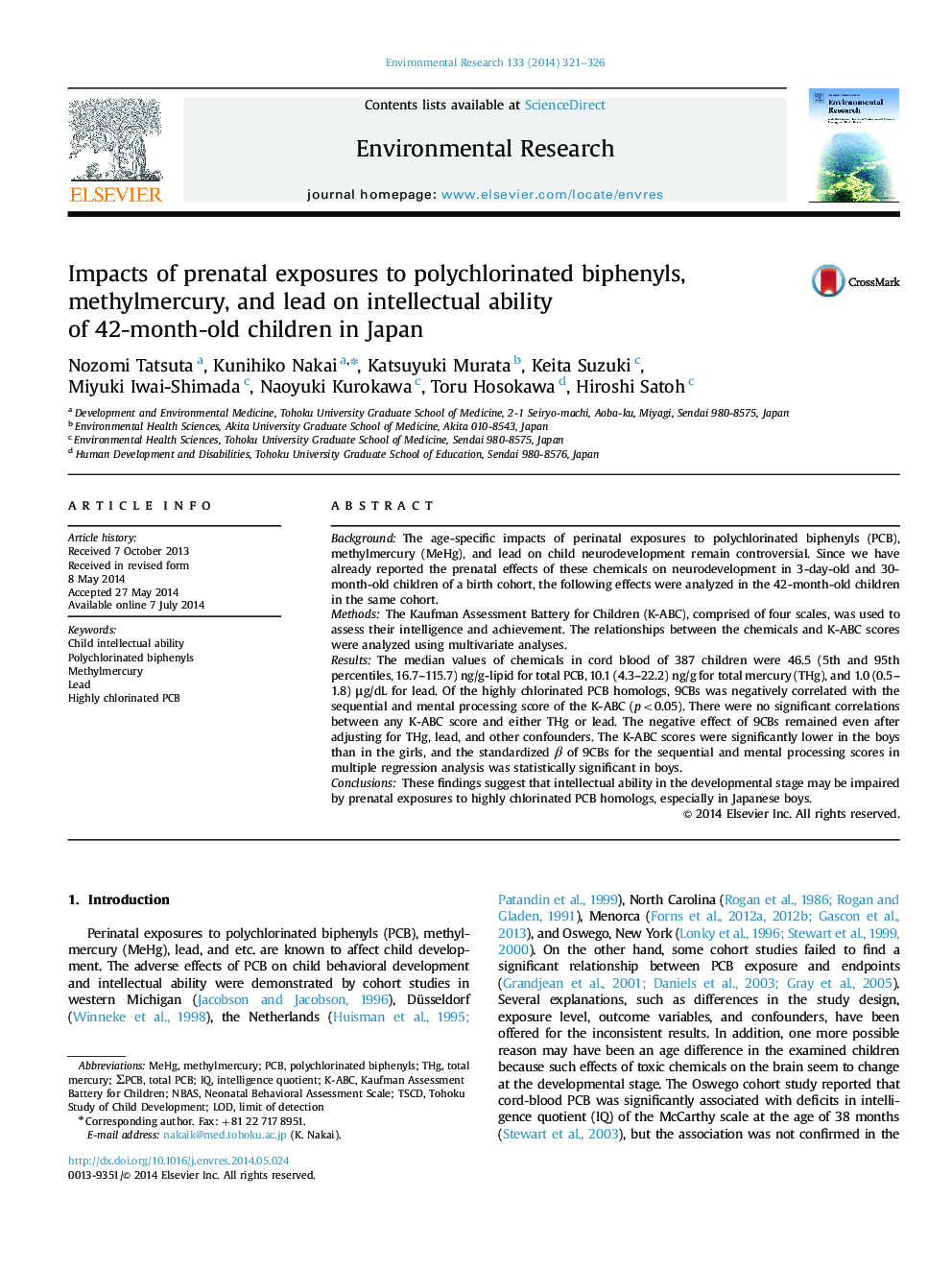| Article ID | Journal | Published Year | Pages | File Type |
|---|---|---|---|---|
| 4469719 | Environmental Research | 2014 | 6 Pages |
•Prenatal exposures to PCB, methylmercury, and lead can affect child development.•We examined the intellectual effects of concomitant exposures to them at the age of 42 months.•Lower intelligence was associated with prenatal exposure to a highly chlorinated PCB.•Japanese boys appear to be more vulnerable to the PCB than girls.
BackgroundThe age-specific impacts of perinatal exposures to polychlorinated biphenyls (PCB), methylmercury (MeHg), and lead on child neurodevelopment remain controversial. Since we have already reported the prenatal effects of these chemicals on neurodevelopment in 3-day-old and 30-month-old children of a birth cohort, the following effects were analyzed in the 42-month-old children in the same cohort.MethodsThe Kaufman Assessment Battery for Children (K-ABC), comprised of four scales, was used to assess their intelligence and achievement. The relationships between the chemicals and K-ABC scores were analyzed using multivariate analyses.ResultsThe median values of chemicals in cord blood of 387 children were 46.5 (5th and 95th percentiles, 16.7–115.7) ng/g-lipid for total PCB, 10.1 (4.3–22.2) ng/g for total mercury (THg), and 1.0 (0.5–1.8) μg/dL for lead. Of the highly chlorinated PCB homologs, 9CBs was negatively correlated with the sequential and mental processing score of the K-ABC (p<0.05). There were no significant correlations between any K-ABC score and either THg or lead. The negative effect of 9CBs remained even after adjusting for THg, lead, and other confounders. The K-ABC scores were significantly lower in the boys than in the girls, and the standardized β of 9CBs for the sequential and mental processing scores in multiple regression analysis was statistically significant in boys.ConclusionsThese findings suggest that intellectual ability in the developmental stage may be impaired by prenatal exposures to highly chlorinated PCB homologs, especially in Japanese boys.
